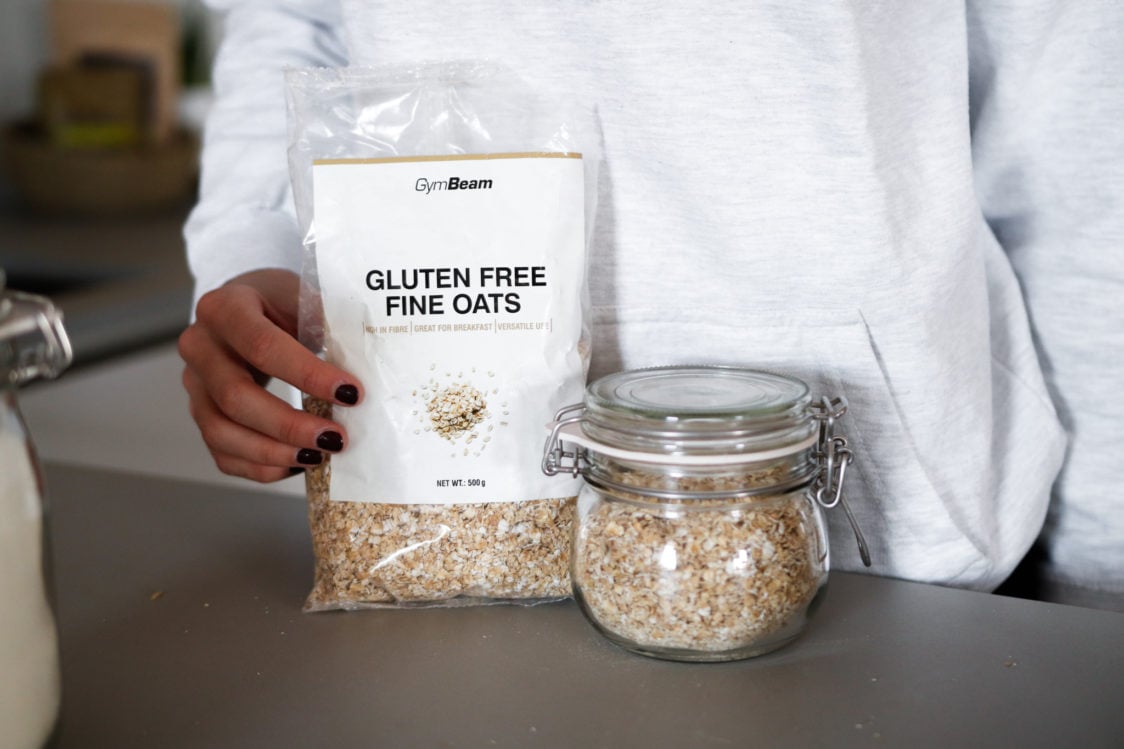Table of Contents
Dietary fibre is a thing that most people have undoubtedly heard of. And everybody who even slightly cares about the proper nutritional balance of their diet is aware that one should not neglect it. It impacts various aspects of people’s health, including digestion, and cardiovascular health, and can aid with unpleasant things like sweet cravings. However, many people have its deficiency and do not benefit from its positive effects. In today’s article, you will discover what is fibre, its benefits and sources.
What is dietary fibre?
Fibre is essentially a polysaccharide. It is made up of many monosaccharide molecules arranged in long chains. Unlike other polysaccharides (such as the starch in cereals), it cannot be broken down by the digestive enzymes. Thus, the fibre passes through the digestive system in a form that is nearly unchanged. This in no way makes it a useless nutrient, though. Quite the opposite. It benefits not only the digestive tract’s function but also factors including blood sugar levels, immunity, and intestinal microbiota as it passes through the digestive tract.
Animal products don’t have fibre. Only plant-based foods contain it naturally. For instance, cereals, legumes, fruits, vegetables, nuts and seeds are some of their sources.
Having enough fibre in the diet in a form other than the aforementioned foods is not a problem nowadays. On the market, there are nutritional supplements that can support the consumption of fibre. The selection includes, for instance, psyllium, apple fibre, or complex multi-source products containing fibre, such as Daily Fiber.

What types of fibre are there?
Contrary to popular belief, fibre is not a single nutrient that offers a variety of health advantages. This term hides a great deal of its various types. Their characteristics and health-related impacts also vary. Do cellulose, inulin, or pectin have any meaning for you? These three are just a few of the many dietary fibre components.
Based on its properties, fibre is split into two categories: soluble and insoluble. Different combinations and proportions of these two categories can be found in food. For instance, fruits contain more soluble fibre than cereals, which mostly contain insoluble fibre.
It’s crucial to keep in mind that there is a partial division between soluble and insoluble fibre. There are other instances where soluble fibre behaves in the digestive system similarly to insoluble fibre and vice versa. [3]
This division, however, is more than sufficient for understanding the function and impacts of fibre. So what distinguishes soluble from insoluble fibre?

1. Insoluble fibre
All types of insoluble fibre serves as a scrub brush for the colon. Because people cannot digest it, it passes through the digestive tract in its entirety. It binds water along the way, increasing its volume while also accelerating and facilitating the flow of digested substances through the digestive tract. [3]
How much energy does insoluble fibre have?
Because the digestive enzymes cannot digest fibre, it passes through the digestive tract almost untouched. It provides no energy and has an energy value of 0 kcal. Furthermore, 1 g of insoluble fibre can prevent the absorption of nutrients with an energy value of about 7 kcal on average. [15]
Main sources of insoluble fibre
Cereals are the primary sources of insoluble fibre. This is because fibre is a key component of the cereal grain’s upper layers. However, there is a lot of insoluble fibre in nuts, legumes, and root vegetables. [2]
Typical representatives of insoluble fibre
Typical representatives of the insoluble fibre group include cellulose, hemicellulose, and others.
2. Soluble fibre
Fibre, which is water-soluble, expands in the digestive tract and takes on a gel consistency. This mass slows digestion, making you feel fuller for longer. When it reaches the large intestine, intestinal bacteria partially digest and process it. Short-chain fatty acids (SCFA), for example, are produced by intestinal bacteria and replenish the intestinal wall. They thus serve to prevent the passage of microorganisms into the blood or strengthen the intestinal wall’s resistance to inflammation. [3]
How much energy does soluble fibre contain?
Since some of the substances created by bacteria are taken into the blood from the large intestine, this type of fibre also provides the body with a small amount of energy. Fibre’s energy value is thus not 0 kcal, however, it is stated that 1g of fibre amounts to about 2 kcal (8 kJ). This is an average number because different types of fibre can vary. [4]
The main sources of soluble fibre
Soluble fibre has the highest concentration in fruits and vegetables.
Typical representatives of soluble fibre
- pectin – found in fruit; apples are a good source.
- inulin – used to make the famed chicory syrup.
- glucomannan – derived from konjac root and is offered not only as a nutritional supplement that aids in appetite reduction, but also in the form of calorie-free kojac pasta.
- psyllium
Should you prefer one type of fibre?
The effects of soluble and insoluble fibre can appear to be completely contradictory. So, which is better? Soluble fibre that slows digestion, or insoluble fibre that keeps you full and promotes stomach emptying? The truth is that a person requires both for overall health and digestive wellness.
Fortunately, most meals include a combination of both forms of fibre. That is why focusing on variety is sufficient. You may easily achieve a balance in the effects of soluble and insoluble fibre if you alternate the sources.
You might be interested in these products:
What effects does fibre have on health?
1. Supports digestion
Fibre is an essential component of healthy, well-functioning digestion. Because of its capacity to bind water, its insoluble component considerably increases its volume. As a result, it has the greatest effect on small intestine peristalsis (intestinal movements) and facilitates the flow of digested contents through the intestine. As a result, the increased volume of stool in the large intestine improves the regularity of stomach emptying. When it comes to preventing or treating constipation, one of the most important factors to consider is the fibre content of your diet. [3,4]
2. Works as a prebiotic and nourishes intestinal microbiota
Fibre, notably soluble fibre, is highly regarded because of its beneficial influence on intestinal microbiota. It is made up of a wide variety of microorganisms (bacteria, yeast, viruses, etc.) that live in the digestive system.
Probiotics are beneficial intestinal bacteria that can be received from food (for example, fermented milk products, fermented vegetables, etc).
Fibre, on the other hand, functions as prebiotics. It is a saccharide-containing material that the beneficial intestinal bacteria feed on. It is crucial for their development and reproduction.
Fibre improves the composition of the intestinal microbiota by promoting the growth of useful and helpful microorganisms. Not only do “good” bacteria and yeast have better reproduction conditions, but in greater numbers, they can also “overpower” undesirable species that may cause health concerns.

Several tens to hundreds of trillions of bacteria live in the digestive tract. One needs to consume foods that feed good bacteria sufficiently for it to predominate. The bacteria then generates short-chain fatty acids, abbreviated SCFA (e.g. butyric acid or propionic acid).
These so-called fermentation products are the primary source of nutrition for colon cells. They thereby maintain the health and integrity of the intestinal wall and protect it against inflammatory processes, for example.
At the same time, the gut wall’s integrity and impermeability restrict the entrance of microorganisms and foreign substances into the blood (the condition when this occurs is called the increased permeability of the intestines – the so-called Leaky Gut Syndrome). In addition, SCFA prevents the development of toxic compounds in the digestive tract, such as ammonia or amines.
However, the effects of SCFA do not stop at the digestive tract. They also appear to have an appetite suppressant effect, can improve immunological function, and have anti-inflammatory properties. Thus, the proper composition of the intestinal microbiota affects human health on multiple levels [1,4,5,6]
3. Helps to avoid cancerous diseases of the digestive system
Fibre is mostly linked to a lower risk of colon cancer. According to the World Health Organization, colorectal cancer (colon cancer) is the third most frequent cancer worldwide and the second-leading cause of death among cancer diseases. [11]
The previously noted prebiotic effect of fibre is likely to play a major role. Fatty acids generated by intestinal bacteria provide energy to colon cells and so support intestinal wall health. Fibre accelerates the flow of digested food through the intestine, which lowers the time that potentially dangerous substances act on the intestinal mucosa. Furthermore, fibre has the ability to bind carcinogenic substances (that are involved in the development of cancer). [3,4]
4. Affects the blood sugar level
Fibre decreases the glycaemic index of foods and dishes. This means that it slows the absorption of glucose from the digestive system into the blood (at the same time, it causes the secretion of a smaller amount of insulin). As a result, there is a lesser increase in blood sugar (glycaemia) after a meal. Soluble fibre primarily causes this impact.
Glycaemia fluctuations should be kept under control, especially for those with diabetes mellitus (diabetes), to avoid blood vessel damage caused by high blood sugar levels.
More stable glycaemia is also beneficial for healthy people. After a meal, an excessive rise in blood sugar levels causes a sudden drop. At this point, the body needs a quick supply of energy and frequently “asks” for it through increased sweet cravings. A fibre-rich diet, on the other hand, can prevent glycaemic fluctuations, which can help lessen sweet cravings and potentially help you lose weight. [2,9]
It is sufficient to pay attention to a complex and balanced meal composition for long-term and stable levels of glycaemia during the day. The article What Is a Healthy Diet and How to Learn to Eat Healthily will explain how to prepare such meal.
Regular physical activity is also essential for maintaining healthy blood sugar levels. You can read about the specific impact of the movement in the article Why Do Sports and Exercise? Stronger Immunity, Heath and 8 Other Reasons.

5. Fibre also affects the health of the heart and blood vessels
Fibre’s soluble component is primarily responsible for its influence on cardiovascular health. It attaches to itself in the intestine with bile acids that have cholesterol embedded in them due to its gel consistency. These bile acids and cholesterol, along with fibre, are eliminated from the body. As a result, when the body requires cholesterol (for example, to make cell membranes), it is forced to dig deeper into its cholesterol reserves, keeping its levels within a healthy range.
A lower chance of developing atherosclerosis (hardening or clogging of blood vessels), which is the basis for the development of myocardial infarction or stroke, is connected with optimal cholesterol levels. [3]
6. Helps in weight loss by regulating energy intake from food
It is well known that fibre is emphasised in every weight loss diet. Its consequences are mostly hidden by the ability to better satiate. Fibre increases stomach fullness and slows gastric emptying. As a result, hunger strikes later.
A person consequently receive less energy from food as a result of longer satiety. For instance, you can easily be happy with just one slice of bread with ham and cheese if your breakfast includes a vegetable side dish. Without veggies, though, you would need two slices of bread to make you feel satisfied. The energy intake from breakfast would be much higher in the second example.
Thus, fibre makes a great help in weight loss. In addition, eating a diet high in fibre can help avoid weight gain, potential obesity, and associated health issues. [2]
You can read more about tips to help you lose weight in the article The Simple Basics of Weight Loss: You’ll Be Surprised What Really Matters.

Which foods contain fibre?
Many people believe that the best sources of fibre are vegetables and fruits. At the same time, this group of foods came in third in the ranking of fibre products.
1. Legumes
- In terms of fibre content, legumes are on the first place. They can contain up to 20 g of fibre per 100 g in raw state.
- However, man people do not eat legumes, so it is beneficial to include them, for instance, in a variety of soups or spreads, or add them to a salad. Another excellent substitute is legume pasta.
How much fibre do different types of legumes have on average?
Product (raw) | dry peas | red beans | chickpeas | red lentils | brown lentils |
|---|---|---|---|---|---|
| fibre content / 100 g | 22 g | 15 g | 12 g | 11 g | 11 g |

2. Whole-grain cereals
- Whole-grain cereals rank second in terms of fibre content.
- Cereals in their natural form, such as rye, organic rice, wheat, barley, etc., are the source of fibre. Products manufactured from these cereals, such as bread, pasta, flakes (such as rye or oat flakes), porridge, etc., also include fibre.
- However, the product must be whole-grain in order for it to have fibre. Whole grain foods include the entire grain of the cereal, including the bran, which is high in fibre. White flour products, however, are free of these components.
How much fibre do various kinds of cereal contain on average?
Product (raw) | barley | oats | rye | wheat | natural rice |
|---|---|---|---|---|---|
| fibre content / 100 g | 16 g | 11 g | 15 g | 9 g | 5 g |

3. Fruits and vegetables
- In terms of fibre content, the aforementioned vegetables and fruits rank third. The fibre content ranges from approximately 1 to 7 g.
- The vegetables with the highest fibre content are collard greens, green peas, and green beans. As to fruits, it includes berries, such as raspberries, currants, and blackberries.
How much fibre do some vegetables contain on average?
Product (raw) | green peas | carrot | bean pods | broccoli | cabbage |
|---|---|---|---|---|---|
| fibre content / 100 g | 5.7 g | 2.8 g | 2.7 g | 2.6 g | 2.5 g |
How much fibre do some fruits contain on average?
Product (raw) | raspberries | pear | kiwi | blueberries | apricots |
|---|---|---|---|---|---|
| fibre content / 100 g | 6.5 g | 3.1 g | 3 g | 2.4 g | 2 g |

4. Nuts and seeds
- Nuts and seeds are also full of fibre. In the case of chia seeds, they can contain between 2 and 34 g of fibre per 100 g.
- Fibre content can reach extremely high levels. Their daily portion should, however, be less than that of the previously mentioned foods.
- Nuts and seeds are rich in both fat and energy. A 100 g serving of almonds contains up to 50 g of fat and 580 kcal (2420 kJ). In terms of energy content, the given amount is similar to a larger piece of lunch consisting of 150 g of meat and 200 g of rice, for example.
- Treat yourself to one small handful (about 30 g) of nuts and seeds per day, as this is the optimal amount. For example, if you eat 30 g of pistachios, you will get about 3.3 g of fibre (about 13% of your required daily intake).
How much fibre do some types of seeds and nuts contain on average?
Product (raw) | chia seeds | flax seeds | almonds | pistachios | hazelnuts | walnuts |
|---|---|---|---|---|---|---|
| fibre content/100 g | 34 g | 27 g | 13 g | 11 g | 9 g | 7 g |

Many people lack fibre in their diet. In 2017 scientists discovered that adults in Europe consume between 14 and 25 g. According to the European Food Safety Authority (EFSA), the recommended intake of fibre should be at least 25 g.
The recommendations for the US population (Dietary Guidelines for Americans) talk about 28 to 34 g, depending on age and gender. Every country has its own recommendations, but they all fall between 25 and 35 g of fibre per day. [4,7,8,10]
The following foods contain the recommended 25 g of fibre: 50 g of oats (this serving has about 7 g of fibre), one large apple (about 3 g of fibre), 70 g of whole-wheat pasta (raw, about 6 g of fibre), 100 g of carrots (about 3 g of fibre), and 100 g of rye bread (approx. 6 g of fibre). [12]

How to eat more fibre and get the necessary amount?
- Choose whole-grain food such as whole-grain bread and pasta.
- Try other cereals, such as barley, oats, and rye.
- Try pseudo-cereals like buckwheat, quinoa, or amaranth.
- Replace white flour in baking with whole wheat, rye, buckwheat, and other whole grains.
- Consume at least 400 g of veggies and fruits per day. The proportion of vegetables should be greater than that of fruit.
- Do not peel fruits and vegetables. The peel of fruits and vegetables, such as apples, pears, and cucumbers, contains the majority of the fibre.
- Include legumes at least twice a week in your diet. They can be added to a soup, spread, or salad.
- Regularly consume nuts and seeds. You can also use nut butter instead of nuts.
- You can also improve your fibre intake with supplements such as psyllium, apple fibre, glucomannan, or the complex supplement called Daily Fiber.
- Examine the fibre content on food labels. A food containing at least 3 g of fibre per 100 g is considered a fibre source, according to the regulations. Food is said to have a high fibre content if it contains 6 g or more of it. [13, 14]
Possible side effects of high fibre intake
Fibre falls under the phrase “too much of anything is bad”. The health benefits of the prescribed 25–30 g are undeniable, but if you overdo the norm, it can cause problems. Fibre intake of 50–60 g per day is regarded as excessive. Difficulties may occur, particularly if you maintain a high intake for a prolonged period of time.
- Gas and abdominal pain can result from eating too much fibre. This may also occur if you rapidly increase fibre intake.
- High consumption may induce diarrhoea and loose stool in some people.
- However, consuming too much fibre can also lead to constipation. Especially if your water intake is insufficient. If you don’t drink much water, the amount of fibre that is within the range of the recommended intake may also contribute to constipation. So be sure to drink between 30 and 45 ml of water per kilogram of body weight.
- Long-term excessive intake of fibre can lead to reduced absorption of minerals, such as iron, zinc or calcium.
- At the same time, absorption of some medications can be reduced. [3]
As you can see, it is not a good idea to consume too much fibre, even though it is a healthy ingredient. If you don’t get enough fibre in your diet, increase your intake in a sensible way. Prioritize consuming foods high in fibre, then think about taking nutritional supplements. On the other hand, consider whether you have an excess intake of fibre if you experience some of the aforementioned negative effects.
If you’re bothered by bloating, check out our article What Causes a Bloated Stomach and How to Get Rid of It?
What should you remember?
There is no denying that fibre is good for our health. Therefore, you shouldn’t neglect its intake. Aim for at least 25 g of fibre per day if you want to assist your digestion, digestive health, and gut microbiota composition, or prevent blood sugar fluctuations. You can achieve this by increasing your intake of legumes, whole grains, veggies, fruits, and nuts.
If you found this article useful, share it with your friends and acquaintances.
[1] ALTHANI, A.A. et al. Human Microbiome and its Association With Health and Diseases. – https://onlinelibrary.wiley.com/doi/abs/10.1002/jcp.25284
[2] BARBER, T.M. et al. The Health Benefits of Dietary Fibre.– https://www.ncbi.nlm.nih.gov/pmc/articles/PMC7589116/
[3] DUYFF, R.L. Complete Food & Nutrition Guide. . New York: Academy of Nutrition and Dietetics, 2017. ISBN 978-0-544-52058-5.
[4] EFSA PANEL ON DIETETIC PRODUCTS, NUTRITION, AND ALLERGIES (NDA) Scientific Opinion on Dietary Reference Values for carbohydrates and dietary fibre. – https://www.efsa.europa.eu/en/efsajournal/pub/1462
[5] GUAN, Z.-W. et al. Soluble Dietary Fiber, One of the Most Important Nutrients for the Gut Microbiota. – https://www.ncbi.nlm.nih.gov/pmc/articles/PMC8624670/
[6] CHAMBERS, E.S. et al. Role of Gut Microbiota-Generated Short-Chain Fatty Acids in Metabolic and Cardiovascular Health. – https://www.ncbi.nlm.nih.gov/pmc/articles/PMC6244749/
[7] MILLER, K.B. Review of whole grain and dietary fiber recommendations and intake levels in different countries. – https://doi.org/10.1093/nutrit/nuz052
[8] STEPHEN, A.M. et al. Dietary fibre in Europe: current state of knowledge on definitions, sources, recommendations, intakes and relationships to health. – https://www.cambridge.org/core/journals/nutrition-research-reviews/article/dietary-fibre-in-europe-current-state-of-knowledge-on-definitions-sources-recommendations-intakes-and-relationships-to-health/B263D1D7B3440DC9D6F68E23C2B4212F
[9] VERONESE, N. et al. Dietary fiber and health outcomes: an umbrella review of systematic reviews and meta-analyses. – https://pubmed.ncbi.nlm.nih.gov/29566200/
[10] USDA. 2020-2025 Dietary Guidelines.– https://www.dietaryguidelines.gov/sites/default/files/2020-12/Dietary_Guidelines_for_Americans_2020-2025.pdf
[11] WHO. Colorectal Cancer Awareness Month 2022 – IARC. – https://www.iarc.who.int/featured-news/colorectal-cancer-awareness-month-2022/>
[12] USDA. FoodData Central.– https://fdc.nal.usda.gov/fdc-app.html#/food-details/321360/nutrients
[13] EU Register of nutrition and health claims made on foods (v.3.6). – https://ec.europa.eu/food/safety/labelling_nutrition/claims/register/public/?event=search
[14] WHO | Healthy diet. – http://www.who.int/nutrition/publicatioAns/nutrientrequirements/healthydiet_factsheet/en/
[15] BAER J. DAVID et al. Dietary Fiber Decreases the Metabolizable Energy Content and Nutrient Digestibility of Mixed Diets Fed to Humans. – https://academic.oup.com/jn/article/127/4/579/4728747


Add a comment